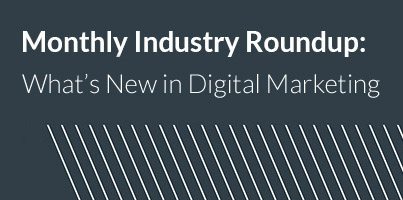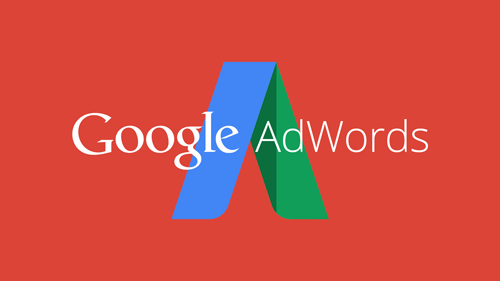Monthly Industry Roundup: May 2016

Location3 Media News: Much of the industry was focused on the news coming out of Google I/O 2016. Location3’s VP of Agency Development Tom Lynch kept a close eye on the annual event and gathered a few of his takeaways in this blog post, where he addresses everyone’s burning question: “Do I really need voice-activated pizza delivery?” Lynch also joined President Alex Porter for Digital Shoptalk Episode 30 for more Google I/O discussion.
Also, Head of Paid Search Jim Halligan breaks down what he deems “likely the biggest evolution within AdWords since enhanced campaigns melded mobile and desktop coverage.”
WHAT’S HAPPENING IN SEARCH?
Attribution Comes to AdWords

As advertisers try to crack the code of understanding how all of their channels fit into the media mix, we often miss important takeaways within a particular channel. AdWords is helping to solve that problem with its release of Attribution for AdWords and some best practices surrounding the topic. The tool allows you to understand the relationships between “channel groupings,” which represent keywords that are inherently different from one another (think brand vs. nonbrand). Within the data of your groupings, you will be able to glean insights of how you should be valuing top-funnel clicks in the conversion path, for example. The default setting in AdWords is to associate the last click to a conversion, which might not be the right model for your campaigns. Attribution for AdWords aims to answer these questions. Cheers to more data!
Google Conversion Import for Salesforce
Finally, a simple way to get that offline data associated with your campaigns. AdWords is introducing a feature that seamlessly allows you to import leads that you have qualified as meaningful to your business. This allows you to match them up with campaign information to show what keywords drive them most impact – all the way down to the sale. Previously, this was a more complicated process requiring coordination of export documents across teams and client contacts, spreadsheet manipulation and messy uploads. The glue that holds this together is a unique click ID passed from Google into Salesforce along with the lead. Once the two systems are synced up, AdWords will frequently check for the leads that have ‘graduated’ to the appropriate assigned status and report on them. This feature is huge for advertisers that have longer sales cycles and/or have issues measuring success beyond the lead.
WHAT’S HAPPENING IN DISPLAY?
Projections Reflect Focus on Banner Ads and Rich Media
When it comes to digital display advertising, be careful which device you choose to spend your ad dollars on. The common wisdom goes that the more smartphones and mobile devices enhance video capabilities, the more ad dollars that advertisers would invest in digital video. But it appears that wisdom isn’t accurate.
According to eMarketer, the projected digital ad spending in 2016 for desktop device/format appears close for both banner ads and video- $5.51 billion for video compared to $5.08 billion for banner ads. The margin for mobile, however, is far greater- $4.08 billion for video compared to the staggering $17.50 billion for banners and other rich media. If this trend continues, it is estimated that by 2019, nearly $27 billion will be allocated to banner media, and only roughly $7 billion to video for mobile devices.
WHAT’S HAPPENING IN CONTENT?

In this infographic from Lindsay Kolowich, she outlines four mistakes to avoid when scaling your content marketing. The issue of scaling is rising to the surface more often as companies attempt to walk the line between quantity and quality. Of course quality is most important. But what happens when you need to produce multiple pieces of quality content in a short amount of time? Know that there are options, including “engaging with the gig economy”, but cutting corners will always undermine your content goals.
One takeaway: If you’re the annoying person always correcting your friends’ grammar mistakes, good news, you’re right! Grammar matters. According to Kolowich, 59% of potential customers would not use a company that uses poor grammar on its website.
WHAT’S HAPPENING IN ANALYTICS?
Google’s Data Studio 360 Impresses
Google Announced a free data visualization tools, Data Studio. This is the free version of Data Studio 360. The major difference between Data Studio and its paid version is the number of reports each account can create. Currently, with free Data Studio, you can only create 5 reports for each account.
Data Studio has some amazing features that makes it a potentially very competitive player in the Business Intelligence space.
- Data Studio has collection of tools and visuals, making it easy to present and customize data visualization.
- Data Studio supports multi-data source connections. It already supports connectors to major vendors such as Google Analytics, Google Sheet, YouTube and Google AdWords. And this list is expected to grow.
- Data Studio uses the same infrastructure as Google Docs, which means the same report can be shared and edited by different people at the same time, allowing different team members to collaborate on the same project.
The product is currently in beta. More details here.
WHAT’S HAPPENING IN LOCAL?
Update: Google My Business API 3.0
Version 3.0 of the Google My Business API was released, and generally speaking, the functionality of these updated features have existed in the Google My Business Management interface for quite some time. Two additional features that are worth noting today include the expanded review ability and the new location attributes (in test mode).
Local Search as Told by a Cookie Monster

Moral of the story: keep your listing updated so that you too can be found by cookie monsters and give all the info necessary to feed their habit. Photos, hours of operation, pin markers — they really do matter to the user on the other side of the screen.
WHAT’S HAPPENING IN SEO?
Google Announces Real-Time Indexing Beta
Google’s Richard Gingras announced at Google I/O that the title company is currently testing a real-time indexing beta that would allow authoritative publishers to send their content directly and instantly to Google. This would allow searchers to find content from these publishers in real-time. The wider release of the beta isn’t expected for a couple of months, and we aren’t likely to hear much more in that time.
Titles and Descriptions Get Lengthier

Google has given SEOs a little more room for text on its title tags and meta descriptions within its search results page. Meta descriptions were increased by 100 characters per line and extended to three lines, while title tags were increased by 10-11 characters to 70-71 characters total. It’s a minor change, but something worth potentially measuring.
Stay In Touch.
Subscribe to our monthly email newsletter.
